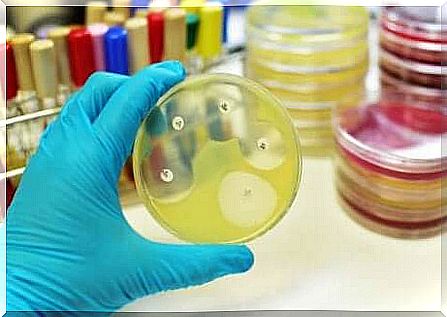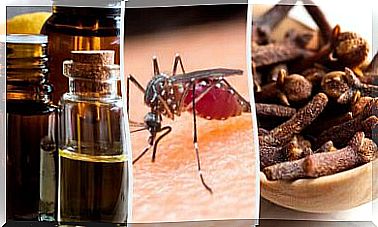Rifampicin: Dose And Indications

Rifampicin is an antibiotic drug that represents the rifampicin family. It is a semi-synthetic compound used as a first choice in the treatment of tuberculosis.
However, it should not be used in monotherapy, as this would favor the development of resistance by bacteria. Therefore, it is administered with other medications that we will explain later.
Rifampicin also has other indications, such as for the treatment of patients without symptoms of the bacterium Neisseria meningitidis , as the prophylactic treatment of Haemophilus influenzae type B and the treatment of leprosy, among others.
A little history of the antibiotic rifampicin

This antibiotic was released in the 1960s. First, a metabolite of rifampicin, rifampicin B, was obtained. In this molecule, they tried to make a series of structural modifications to increase the potency of the antibiotics, while slowing down their rapid elimination by bile. Finally, it was possible to synthesize rifampicin.
After its introduction on the market, it was considered a first-line treatment for tuberculosis. However, pathogen resistance against rifampicin has emerged. This fact caused the obligation to administer other medications together with rifampicin, such as isoniazid and ethambutol.
However, the discovery of rifampicin was an advance in the field of medicine, without a doubt. Learn more about this medication in this article.
What is tuberculosis?
Tuberculosis is a disease caused by the infection of a bacterium known as Mycobacterium tuberculosis. This microorganism affects, in most cases, the lungs. It spreads through the air, for example, when a person sneezes or coughs. It only takes someone else to breathe in the expelled particles to become infected.
However, it is a preventable disease and, fortunately, today it is curable. Specifically, since the year 2000, more than 49 million patients have been cured thanks to current diagnosis and treatments.
As for the signs and symptoms of this disease, they depend on the area where the bacteria multiply. Usually, as we said, it affects the lungs , presenting the following symptoms:
- Intense and lasting cough.
- Chest pain.
- Cough accompanied by blood or thick phlegm.
- Fever and chills.
- Weight loss .
- Decreased feeling of hunger.
How does rifampicin exert its effect on the body?

Rifampicin owes its antibiotic effect to its ability to inhibit RNA synthesis from bacterial cells. For this, it inhibits the action of RNA polymerase, a DNA-dependent enzyme. Rifampicin does not bind to eukaryotic cell polymerases such as those in humans; therefore, human RNA synthesis is unaffected.
On the other hand, it is a bacteriostatic or bactericidal drug, depending on the dose at which it is administered. At lower doses, it will be bacteriostatic, that is, it prevents the development of bacterial cells and, at higher doses, it will have bactericidal action, causing the bacteria to die.
At what dose is rifampicin administered?
The dose will vary depending on the patient being treated. As for the doses recommended in adult patients who are not infected with HIV, it is administered orally and intravenously, with a maximum allowed dose of 600 mg per day. If the patient has HIV, the dose will be 10 mg/kg, orally and intravenously.
As for children, the dose for those who are HIV-negative is reduced to 10-20 mg/kg per day, with a maximum dose of 600 mg, always combined with another anti-tuberculosis agent. If the child has the human immunodeficiency virus, the dose will be the same.
It is administered once a day for two months, together with another anti-tuberculosis. Then, isoniazid and rifampicin will be given at the same dose once a day or 2 or 3 times a week for the next 4 months.
Conclusion
Rifampicin is an antibiotic indicated in the first-line treatment of tuberculosis in combination with other agents. The combination became necessary due to the resistance developed by the bacteria.
You can consult with your doctor or pharmacist and ask any questions you may have about this medicine. It is necessary to always follow the instructions indicated by the professionals. Misuse of medications can lead to serious health problems.









